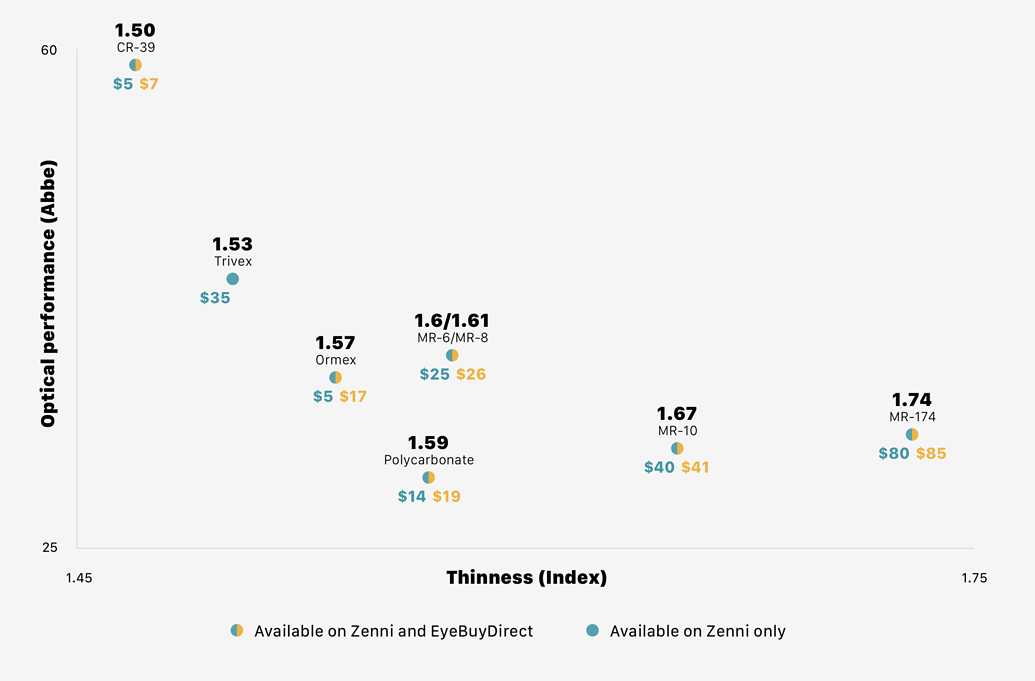Difference between revisions of Chromatic Aberration
No edit summary |
No edit summary |
||
| Line 75: | Line 75: | ||
|32 | |32 | ||
|} | |} | ||
[[File:Lens materials and optical quality chart.png|Lens materials and optical quality chart]] | |||
[https://community.endmyopia.org/t/lens-materials-and-optical-quality-chart/4415 chart created by steadicat] | |||
==References== | ==References== | ||
Revision as of 07:08, 5 August 2022
Chromatic aberration is probably most easily understood as a prism effect. When light shines through a prism, you see that different colors of light bend (undergo Refraction) differently and create a rainbow effect. When light shines through any lens, including glasses and the natural lens of your eye, the same occurs to a lesser degree. The effect of this is that the Focal Length of the lens is not exactly the same for all colors of light.
Duochrome test
| KH | HK |
|---|---|
| EPO | OPE |
The chromatic aberration expected during a normal eye exam is about a half diopter difference between red and green. This can be a handy test to dial in a final prescription by looking at text on red and green backgrounds and seeing which is clearer.
External Sources
Lens Material
Different materials have different Abbe numbers. Materials with higher values are better, since they tend to have less chromatic aberration.
Here are some typical values:[1]
| Material | Index | Abbe Value |
|---|---|---|
| Crown Glass | 1.523 | 59 |
| High Index Glass | 1.60 | 42 |
| High Index Glass | 1.70 | 39 |
| Plastic CR-39 | 1.49 | 58 |
| Mid Index Plastic | 1.54 | 47 |
| Mid Index Plastic | 1.56 | 36 |
| High Index Plastic | 1.60 | 36 |
| High Index Plastic | 1.66 | 32 |
| Trivex | 1.53 | 43 |
| Polycarbonate | 1.58 | 30 |
| MR-174 | 1.74 | 32 |

